What is the Process Involved in Corrective Jaw Surgery?
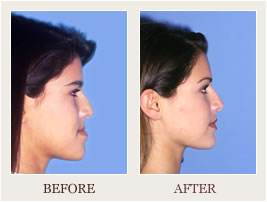
Pre-Surgical Orthodontics
Before surgery, Dr Richard Joseph will work with your orthodontist who aligns your teeth using braces. This phase of treatment usually lasts from 6 to 12 months and requires regular orthodontist appointments for adjustments. Because your teeth are being moved into a position that will fit together after surgery, your bite may seem worse during this period. However, when your jaws are repositioned during surgery, your teeth should fit together properly. It may be necessary to have one or more teeth, including your third molars (wisdom teeth) removed during this early phase of treatment.
Pre-Surgical Records
After the initial orthodontic alignment, Dr. Joseph makes final surgical preparations. Records, X-rays, pictures and models of your teeth are updated and function as a guide for your surgery.
Preparing for Orthognathic Surgery
Most orthognathic procedures are typically performed under general anesthesia in a hospital or an ambulatory surgical center. Prior to surgery, your medical history is reviewed, and a physical examination is completed. Also, special dietary instructions and prescriptions are provided, and lab tests are performed. Occasionally a pre-surgical consultation with an anesthesiologist is required.
The Surgical Procedure
The duration of orthognathic surgery varies with the type of surgery and the severity of the abnormality. Dr. Joseph will give you an idea of approximate time required for your particular surgery.
Lower Jaw Surgery
Procedures involving the lower jaw usually require the separation of the rear (joint) portion of the jaw from the front portion that supports your teeth. This allows Dr. Joseph to reposition the tooth-bearing part of your lower jaw forward or backward. (see drawing) The boney segments are then repositioned and are fastened with tiny surgical plates and screws. In extreme cases the jaws may require wiring of the teeth for 5-7 weeks.

Upper Jaw Surgery
In the upper jaw, the tooth-bearing portion of the jaw is separated from its base and then repositioned up, down, forward or backward. During surgery, Dr. Joseph moves your jawbones according to your specific needs. Occasionally, bone is added, taken away or reshaped. Tiny surgical plates and screws are used to hold your jaws in their new positions.
Also, wires or rubber-bands may fasten your jaws together temporarily depending on the circumstances. Dr. Joseph may also place a plastic bite splint or guide to help maintain a proper bite. Although incisions are usually made inside the mouth, it is sometimes necessary to make small incisions outside the mouth. Care is always taken to minimize scarring.Distraction Osteogenesis and SARPE
Distraction osteogenesis refers to the progressive gradual stretching of the bone over time. Distraction osteogenesis is a surgical technique for reconstruction of bony deformities. Increased bone and soft tissue are created as a result of the gradual displacement or stretching of surgically created bony fractures. Distraction techniques generate not only new bone, but also soft tissue such as skin, mucosa, muscle, nerve and blood vessels. There is no need for bone grafting in these cases.
SARPE (Surgical Assisted Rapid Palatal Expansion)
Also called SARME (Surgical Assisted Rapid Maxillary Expansion)
SARPE or SARME is primarily used to treat transverse discrepancy or very narrow upper jaw. In the case of a narrow upper jaw, the tooth-bearing portion of the jaw is separated from its base and then widened using an expander appliance (Hirax) placed by your orthodontist a few days before the operation. After the surgery, Dr. Joseph will instruct you on daily activation of the expander appliance. After several days the upper jaw will be wider and the bones will mend in the new expanded position. Your orthodontist will then move the front teeth to close the space, while leaving the back teeth and upper jaw wider. This outpatient procedure is often performed as an initial treatment prior to orthodontics and several months before the major jaw surgery procedures.
The Photographs below show the narrow upper jaw and the stages of progress with the SARPE (SARME) treatment.
- Narrow Maxilla
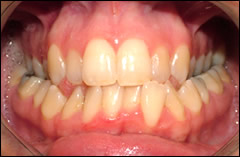
- Final Occlusion
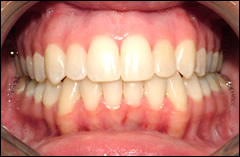
- Hirax Appliance
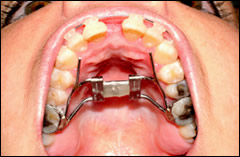
- Expanded Arch with Diastema
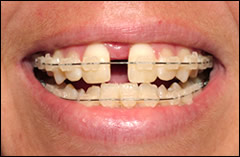
View SARPE/SARME Case Studies:
Patient 116
Sliding Genioplasty
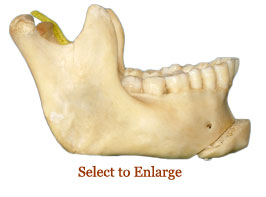
In addition to repositioning the entire lower jaw, we often move the chin portion of the lower jaw forward, backward, upward or downward to complement the profile. This may also improve muscle tone and help with lip closure. The procedure is called a Sliding Genioplasty. Dr. Joseph makes an incision inside the mouth below the lower lip. The actual bony chin portion of the jaw is then cut and advanced or moved back. This segment is then secured with a tiny bone screw or wire.
The photograph to the right shows a model of a sliding genioplasty. The Sliding Genioplasty advances the patient’s actual chin by moving the lower portion of the jaw.
Immediately Following Surgery
After surgery, patients are typically taken to a recovery room until the effects of the anesthesia have subsided. (Family members and loved ones are not permitted in the recovery room.) Whether patients return home the day of surgery, or are required to stay overnight in the hospital, depends on each patient’s specific needs. In either case, it is important to drink adequate fluids to maintain proper nutrition before you return home. Patients are supplied with instructions for a modified diet, as well as a schedule for advancing to a normal diet. Tobacco products and strenuous physical activities must be avoided. Proper healing depends on strictly following all instructions.
Discomfort following orthognathic surgery is easily controlled. Prescriptions for pain medication, and ice packs that aid in the healing process are supplied.
Post-surgical swelling is expected. It typically peaks between 48 and 72 hours and then gradually subsides. Most swelling dissipates between 7 and 10 days, but slight residual swelling may be visible for several months. Bruising, nasal congestion and a sore throat may also occur after surgery and will steadily improve.
After surgery, Dr. Joseph works in conjunction with your orthodontist to “fine-tune” your bite. Once your braces are removed, it may be necessary to wear a retainer to help maintain your bite. Your treatment, including orthodontics before and after orthognathic surgery, may take 1-2 years to complete.
Follow-Up Care
After your orthognathic surgery and orthodontic treatment are completed, Dr. Joseph and your orthodontist will determine when and how often re-evaluations of your bite are needed. Also, regular check-ups with your general dentist are critical to maintain optimum dental health.
Further Study About Corrective Jaw Surgery
- Evaluate Your Need for Corrective Jaw Surgery
- Learn More About the Corrective Jaw Surgery Process
- Benefits of having Corrective Jaw Surgery

